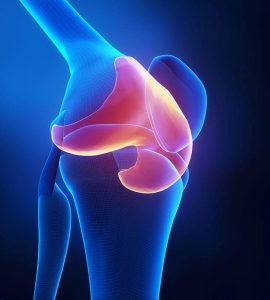Heel pain is one of the most common foot complaints, and it can affect people of all ages. Whether you are an athlete, someone who spends long hours on your feet, or simply enjoys a daily walk, discomfort in the heel can interfere with your everyday life. While some cases of heel pain may resolve on their own, persistent or worsening pain can signal an underlying condition that requires attention.
Why Does Heel Pain Happen?
The heel is the largest bone in the foot and plays a crucial role in supporting body weight and absorbing impact while walking, running, or standing. Because it takes on so much pressure, the heel is vulnerable to overuse injuries, inflammation, and structural problems. Heel pain can result from conditions affecting the bone, soft tissues, or surrounding structures. Identifying the exact cause is important for selecting the most effective treatment.
Common Causes of Heel Pain
Several conditions can lead to heel discomfort, each with its own characteristics. Here are some of the most common causes:
-
Plantar Fasciitis
Plantar fasciitis is the leading cause of heel pain. It occurs when the plantar fascia—a thick band of tissue that runs along the bottom of the foot—becomes inflamed due to overuse or excessive strain.
Typical symptoms include:
- Sharp pain at the bottom of the heel, especially with the first steps in the morning
- Pain that worsens after long periods of standing or walking
- Stiffness in the arch or heel
People who are overweight, have flat feet or high arches, or spend long hours on hard surfaces are more prone to plantar fasciitis.
-
Heel Spurs
Heel spurs are bony growths that can develop where the plantar fascia attaches to the heel bone. They are often associated with plantar fasciitis and may not always cause symptoms on their own.
When painful, heel spurs can lead to:
- Localized pain in the bottom of the heel
- Discomfort when walking or standing for long periods
- Inflammation in surrounding soft tissue
-
Achilles Tendinitis
The Achilles tendon connects the calf muscles to the heel bone. Overuse or sudden increases in physical activity can lead to inflammation known as Achilles tendinitis.
Common signs include:
- Pain and stiffness in the back of the heel
- Swelling or tenderness along the tendon
- Pain that worsens during running or climbing stairs
If left untreated, Achilles tendinitis can increase the risk of tendon rupture.
-
Bursitis
Bursae are small fluid-filled sacs that cushion joints and reduce friction. In the heel, the retrocalcaneal bursa can become inflamed from repetitive stress, leading to bursitis.
Bursitis typically causes:
- Swelling and warmth at the back of the heel
- Pain that worsens with activity or when wearing tight shoes
- Tenderness when pressing on the affected area
-
Stress Fractures
Repeated impact or sudden increases in activity can cause tiny cracks in the heel bone known as stress fractures. Athletes, runners, and individuals with osteoporosis are most at risk.
Symptoms may include:
- Persistent heel pain that worsens with activity and improves with rest
- Mild swelling or bruising
- Difficulty bearing weight on the affected foot
Stress fractures require prompt evaluation to prevent worsening or complete fracture.
-
Nerve Entrapment or Tarsal Tunnel Syndrome
Nerves passing through the ankle and foot can become compressed, leading to pain, tingling, or numbness in the heel. Tarsal tunnel syndrome is a common example of nerve-related heel pain.
Symptoms can include:
- Burning or tingling sensations in the heel or sole
- Pain that radiates to the arch or toes
- Symptoms that worsen after prolonged standing
How Heel Pain Is Diagnosed
An orthopaedic specialist will begin with a physical examination and discussion of your medical history and lifestyle. Imaging tests may be ordered to confirm the diagnosis or rule out other conditions:
- X-rays – Useful for detecting fractures or heel spurs
- Ultrasound – Shows soft tissue inflammation or tears
- MRI scan – Provides detailed images of tendons, ligaments, and nerves
Accurate diagnosis is the first step toward effective treatment.
Treatment Options for Heel Pain
Treatment depends on the underlying cause, severity of symptoms, and your activity level.
Most cases of heel pain respond well to conservative, non-surgical care.
Non-Surgical Treatments
- Rest and activity modification to reduce strain on the heel
- Ice therapy to manage inflammation
- Supportive footwear or custom orthotic inserts
- Physiotherapy to stretch and strengthen the foot and calf muscles
- Anti-inflammatory medications or corticosteroid injections for severe pain
Surgical Treatments
Surgery is considered only if non-surgical options fail after several months or if structural problems require correction. Procedures may involve releasing the plantar fascia, removing bone spurs, or repairing damaged tendons.
Recovery and Prevention
Recovery time depends on the cause and severity of heel pain.
Mild conditions may improve in a few weeks with proper care, while more complex injuries or surgeries require several months of rehabilitation.
To prevent future heel pain:
- Wear well-cushioned, supportive shoes
- Stretch your calves and plantar fascia regularly
- Maintain a healthy weight to reduce foot stress
- Avoid sudden increases in physical activity
When to See an Orthopaedic Specialist
If heel pain persists for more than a few weeks, worsens over time, or interferes with daily activities, it is time to see an orthopaedic specialist. Early evaluation and treatment not only relieve pain but also prevent chronic problems or long-term mobility issues.




